Raspberry productivity is greatly influenced by the quality care of the bush throughout the growing season and after it. The plant needs a good preparation for winter for a quality crop for another year. Shoots from the fall should be cut, watered in a timely manner, mulch the soil and arrange a reliable shelter from winter cold. The implementation of this set of measures will allow the plant to successfully winter.
Content
- 1 Autumn shrub preparation
- 2 Watering in autumn
- 3 Trimming and its implementation methods
- 4 Top dressing
- 5 Pest and Disease Prevention
- 6 Technology and timing of raspberries
- 7 Shelter dates in the fall and disclosure in the spring
- 8 Features of preparing remont raspberries for winter
- 9 Protective systems against frost and snow retention
- 10 Conclusion
Autumn shrub preparation
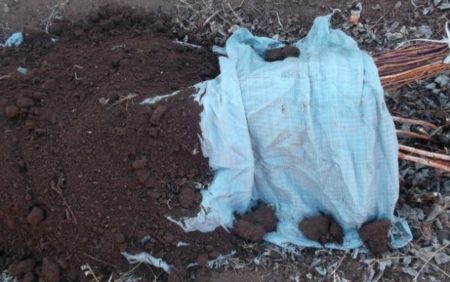 Experienced gardeners begin the first phase of preparation for winter in the summer. Since mid-August, mineral fertilizers have been actively introduced, contributing to the maturation of the woody part. For this, top dressing with a high amount of potassium and phosphorus is used and the nitrogen component is completely excluded. In addition to increasing productivity, they are also needed to prepare the root system of the plant for winter. The last time fertilizers are applied in early October before the onset of severe frosts.
Experienced gardeners begin the first phase of preparation for winter in the summer. Since mid-August, mineral fertilizers have been actively introduced, contributing to the maturation of the woody part. For this, top dressing with a high amount of potassium and phosphorus is used and the nitrogen component is completely excluded. In addition to increasing productivity, they are also needed to prepare the root system of the plant for winter. The last time fertilizers are applied in early October before the onset of severe frosts.
Mulching
To preserve the root system of the plant, it is necessary to mulch the soil. This increases soil moisture and promotes good growth. In the role of mulch, organics having a neutral-acidic environment are used. A good choice will be straw, peat or quail foliage. No need to use compost for this purpose. It contains more nitrogen. In addition, during warm winters, due to compost, the lower part of the shoots will begin to heat up.
The mulch is laid in a layer of 5-10 cm. A smaller amount will not reliably cover the root system, and too thick a layer will cause the branches to warm up. In the thaw due to too thick a layer of mulch, fungal diseases on the shoots or purulent process often develop. Before laying the mulch, the soil is abundantly watered so that raspberry wintering does not occur with dry roots.
Tying and extra shelter
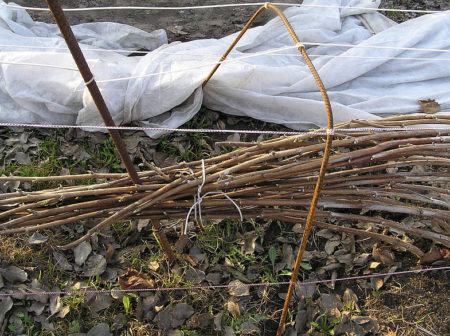 After the shrub discards leaves, raspberry shoots bend to the soil. To do this, dig pegs made of wood or metal rods into the soil and stretch the wire. It should be located at a distance from the ground level of not more than 20 cm. With the first snowfall, shoots located close to the soil go under the snow, not freezing. The scourges are tied in an arcuate manner with threads or ribbons of durable nylon.
After the shrub discards leaves, raspberry shoots bend to the soil. To do this, dig pegs made of wood or metal rods into the soil and stretch the wire. It should be located at a distance from the ground level of not more than 20 cm. With the first snowfall, shoots located close to the soil go under the snow, not freezing. The scourges are tied in an arcuate manner with threads or ribbons of durable nylon.
Watering in autumn
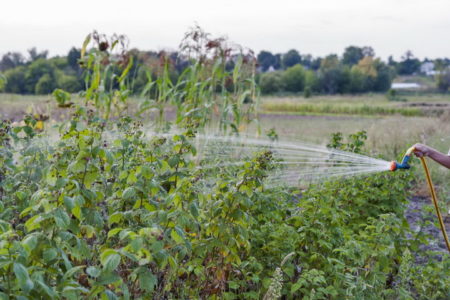 All raspberries in the fall are abundantly moistened. Watering is carried out regularly from the first days of September. The last time moisturizing is carried out half a month before the expected date of frost. It is especially important to water raspberries often if there is little rain in the fall.
All raspberries in the fall are abundantly moistened. Watering is carried out regularly from the first days of September. The last time moisturizing is carried out half a month before the expected date of frost. It is especially important to water raspberries often if there is little rain in the fall.
According to experienced gardeners, the last time to water raspberries is necessary after the formation of ice crust on the soil. Each plant requires 3 liters of water. This is enough to supply the root system with moisture and protect it from drying out in the winter months.
Trimming and its implementation methods
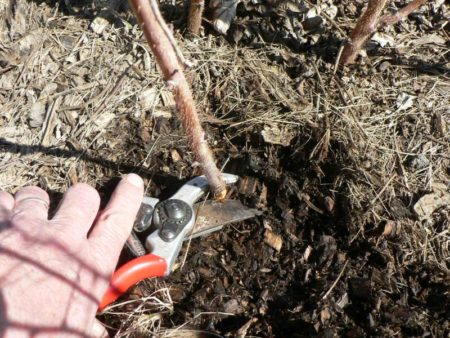 On the timing of raspberry cutting, experts differ. Some gardeners believe that raspberries are cut before the cold comes, because then the sap flow is already completed and the plant easily tolerates the procedure. According to others, you need to cut off the extra branches after the fruiting.They motivate this by the fact that in this way the plant retains strength to prepare the root system for winter.
On the timing of raspberry cutting, experts differ. Some gardeners believe that raspberries are cut before the cold comes, because then the sap flow is already completed and the plant easily tolerates the procedure. According to others, you need to cut off the extra branches after the fruiting.They motivate this by the fact that in this way the plant retains strength to prepare the root system for winter.
But most experienced summer residents adhere to an intermediate point of view and offer to thin out raspberries in early September. During this period, the plant still retains a sufficient amount of juice, but its movement is already slowing down. Cutting raspberries, first remove the old shoots that no longer bear fruit. Cut completely diseased and damaged branches.
To prevent the spread of raspberries throughout the site, the root system is also trimmed. To do this, a bayonet shovel is inserted into the ground around each bush, retreating 30 cm. With it, the ends of the roots are cut off.
To improve the quality of the crop, double pruning is used. In this case, in addition to the usual cutting of unnecessary shoots, the young branches pinch from above. This stimulates the development of a daughter young kidney group. With the onset of spring, the shoots are shortened again and cut to the first fully developed bud. To prevent thickening of the planting, 30 cm of free space is left between the individual shoots.
Top dressing
Having finished work on pruning raspberries, all the resulting garbage is removed from the site and burned. Fallen foliage along with the old mulch is also collected and destroyed in order to protect plants from harmful insects that are going to winter there. For successful wintering, weak plants fertilize. Nutrients increase the chance of surviving frosts successfully.
In the fall organic and mineral supplements are introduced, alternating them seasonally. In the fall do not use nitrogen-containing substances, so as not to provoke the growth of green mass. This is dangerous for the plant, because young shoots do not have time to get lignified by the cold and die in the winter from frost.
You can use any of the following types of fertilizers:
- potassium phosphorus in the amount of 30 g per plant;
- superphosphate in the amount of 60 g per bush;
- potassium sulfate contribute 40 g per copy;
- potassium monophosphate 35 g per plant.
Mineral fertilizers are best laid out in grooves dug at a distance of 30 cm from the bush in a circular manner. Then they are sprinkled with soil and well watered the ground. To prepare raspberries for winter, you can use rotted manure at 4 kg per square meter with a mandatory digging.
Pest and Disease Prevention
Disease prevention is one of the required winter preparation procedures. After fertilizing, the bushes are sprayed with a special solution. It is prepared from 10 l of water, 20 g of Karbofos and 30 g of chloroxide. For each plant, 1.5 liters of such a solution are used. Also, processing can be done by diluting an Intavira tablet in 10 l of water. If there is moss or lichen next to the raspberry, the plants are sprayed with vitriol.
Technology and timing of raspberries
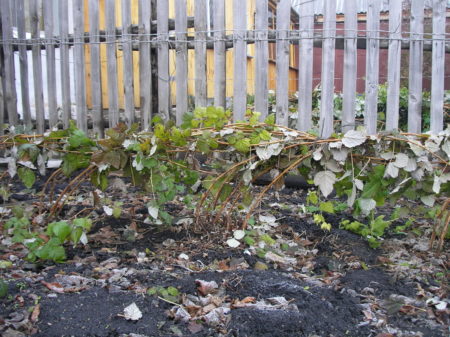 Many inexperienced gardeners bend raspberries after the onset of frost and therefore make a mistake. Then the shoots often break, the structure of the internal vessels is disrupted, which leads to the death of the whip with the onset of spring due to insufficient supply of nutrients along the entire length.
Many inexperienced gardeners bend raspberries after the onset of frost and therefore make a mistake. Then the shoots often break, the structure of the internal vessels is disrupted, which leads to the death of the whip with the onset of spring due to insufficient supply of nutrients along the entire length.
You should not bind all the stems of one bush together with a bunch, since this method does not save the stems from the cold, if they are above the surface of the snow cover. Before this, you need to clean the stems from the leaves, gently running your hand in a hard glove from the bottom of the stem to the top.This simple procedure preserves the integrity of the kidneys and increases the raspberry yield for the next year.
After removing the foliage, they perform a folding. On a bunch of branches you need to tie a stone weighing 1 kg and lay on the ground. Repairing gradesgrowing on a support are simply attached to the lower crossbeam so that the height of the resulting beam does not exceed 25 cm. So, the separated raspberry stalks will not rise above the border of the snow cover and will not freeze. Additionally, you can cover the bent raspberries with spandex. It will allow the plant to breathe and save from the cold if there is not enough snow.
Shelter dates in the fall and disclosure in the spring
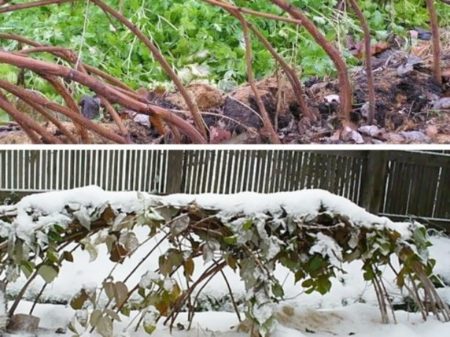 The ideal time to cover raspberries for the winter is the period after completion of leaf fall and before the first snow. Then the branches are still well bent, and the rhizome is already quite developed.
The ideal time to cover raspberries for the winter is the period after completion of leaf fall and before the first snow. Then the branches are still well bent, and the rhizome is already quite developed.
With the onset of spring, it is important to open the raspberries in time and tie it to the support. Opening too early leads to severe burns of the wood due to significant temperature changes. In addition, in March, strong winds often blow, damaging the condition of the wood.
Raspberries should be opened gradually. After the snow melts, the covering layer is removed. This is necessary to ventilate the lower part of the branches and the mulching layer, in order to prevent their browning. Then the shoots are lifted and tied to a support. This procedure is done until mid-April.
Features of preparing remont raspberries for winter
Such varieties of raspberries are characterized by high productivity and the ability to bear fruit both on annual branches and on two-year-old ones. To obtain the greatest yield, the timing of all activities is shifted, allowing the plant to bear fruit longer.But since the highest quality crop is still obtained on annual branches, it is not worth wasting time and effort on preserving last year. Therefore, after the onset of severe frosts, the entire woody part of the plant is cut, leaving small stumps and small basal stems. The roots are insulated with mulching material so that they successfully winter. The layer of shelter should not be very thick so that the plant does not rot if the winter is warm.
Protective systems against frost and snow retention
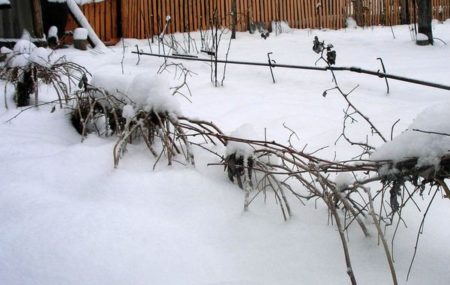 If raspberries grow in an open area and the snow does not linger on the bushes, they arrange a special snow retention system. To do this, from the windward side, special barriers are arranged. A good option would be sheets of polycarbonate or plywood, dug in the ground. Moreover, the first option is preferable for durability, since polycarbonate does not rot and does not burst from frost.
If raspberries grow in an open area and the snow does not linger on the bushes, they arrange a special snow retention system. To do this, from the windward side, special barriers are arranged. A good option would be sheets of polycarbonate or plywood, dug in the ground. Moreover, the first option is preferable for durability, since polycarbonate does not rot and does not burst from frost.
If there is a need to fix a snow retention device, it is tied to a support. The design is set so that the wind does not fall on raspberries. Therefore, it is located on the side of a constant wind in winter. You can clarify the necessary location by the wind rose of the hydrometeorological service of the district.
 You may be interested in:
You may be interested in:If there is insufficient snow or blowing it out, even with a snow retention system, raspberries are additionally covered with special material. To do this, use lutrasil or spanbond. In this case, the branches are bent to the soil and laid on top in several layers of non-woven material. In areas with severe and snowy winters, an arc-shaped cellular polycarbonate is additionally laid on top.
Conclusion
With proper preparation for the upcoming cold weather, raspberries will survive the winter perfectly and the next year will appreciate a plentiful harvest of tasty and healthy berries.It is important to carry out all the planned activities and carry them out as scheduled.


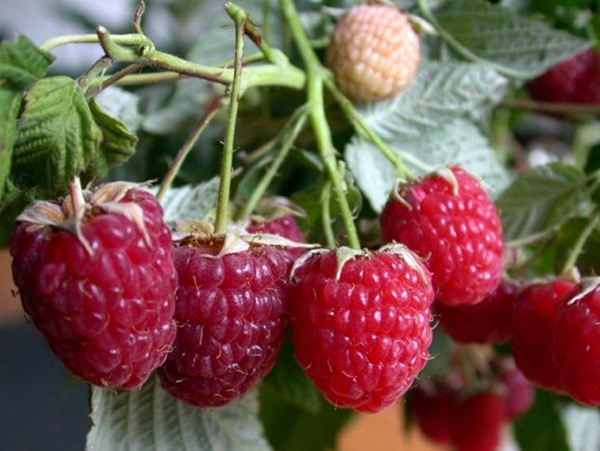
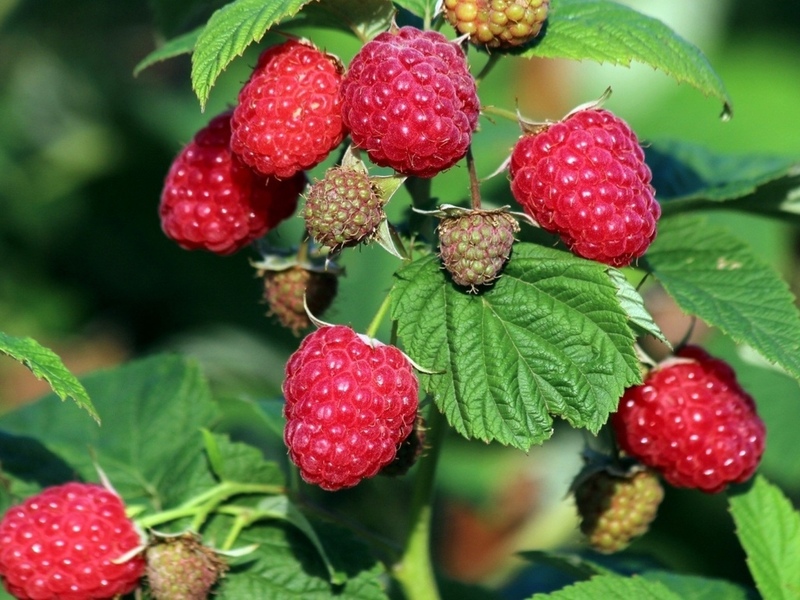
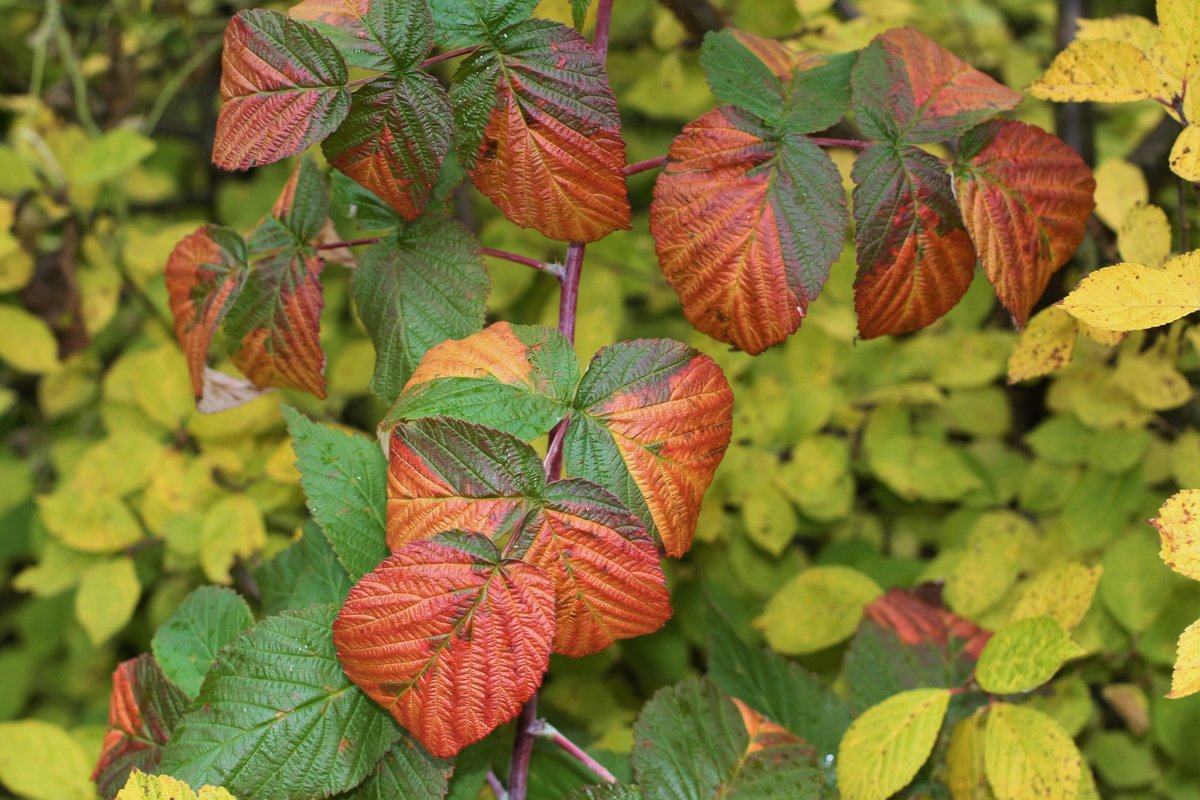 Black raspberries in autumn: care and preparation for winter shelter, pruning
Black raspberries in autumn: care and preparation for winter shelter, pruning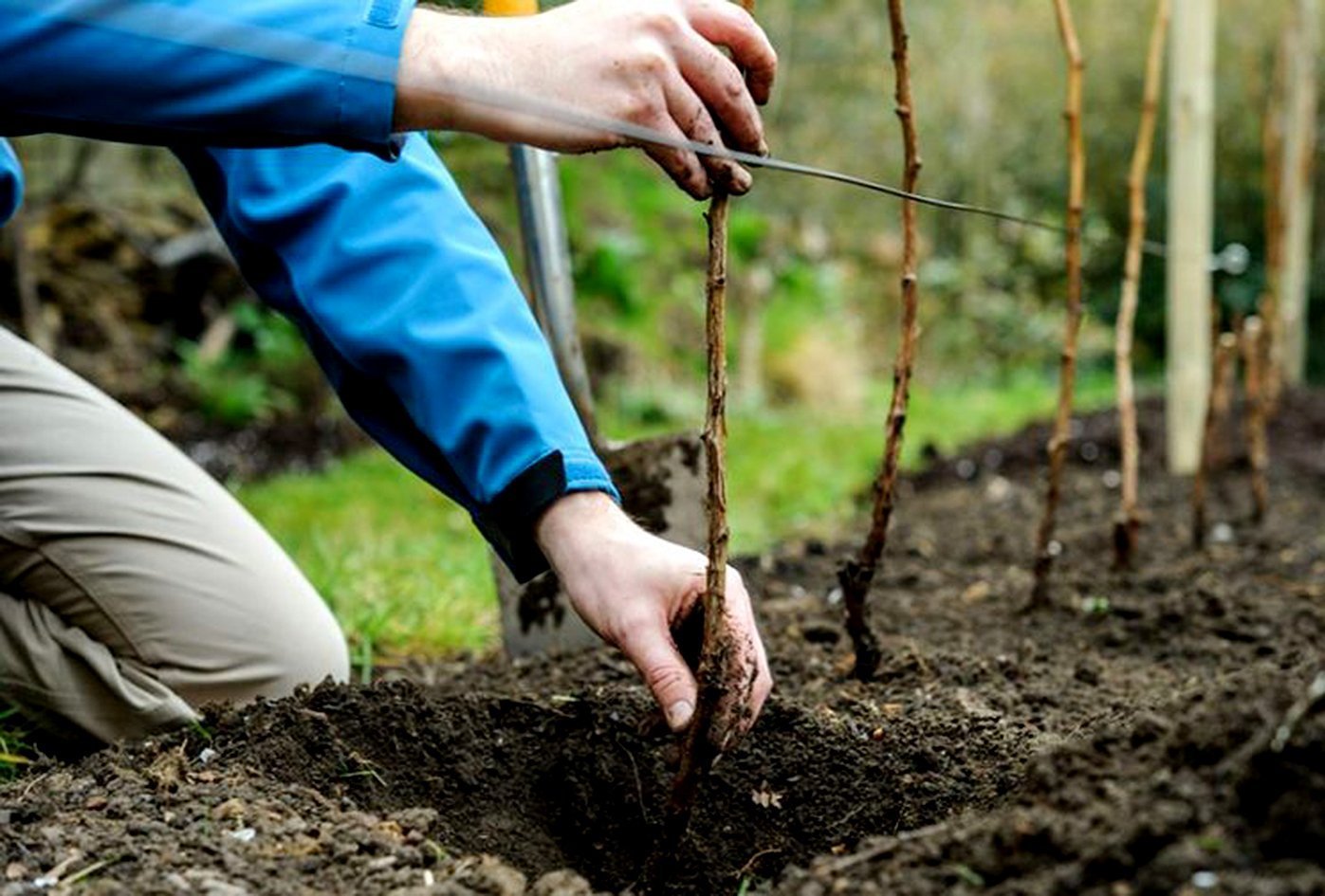 Features planting raspberries in the fall and care for it
Features planting raspberries in the fall and care for it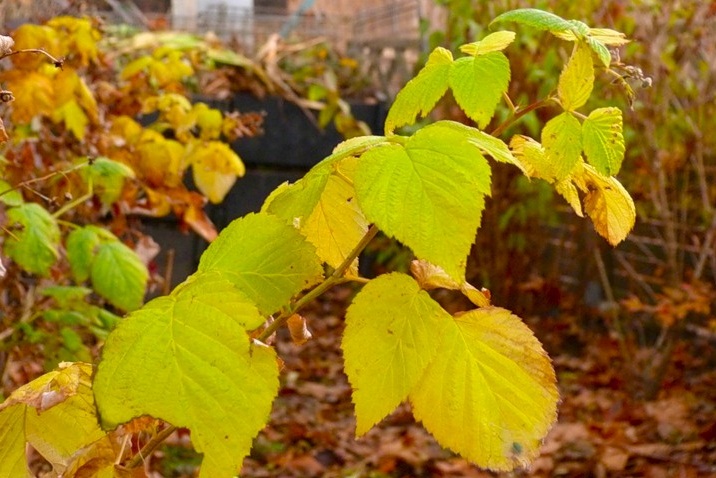 Proper care for raspberries in the fall and its preparation for winter
Proper care for raspberries in the fall and its preparation for winter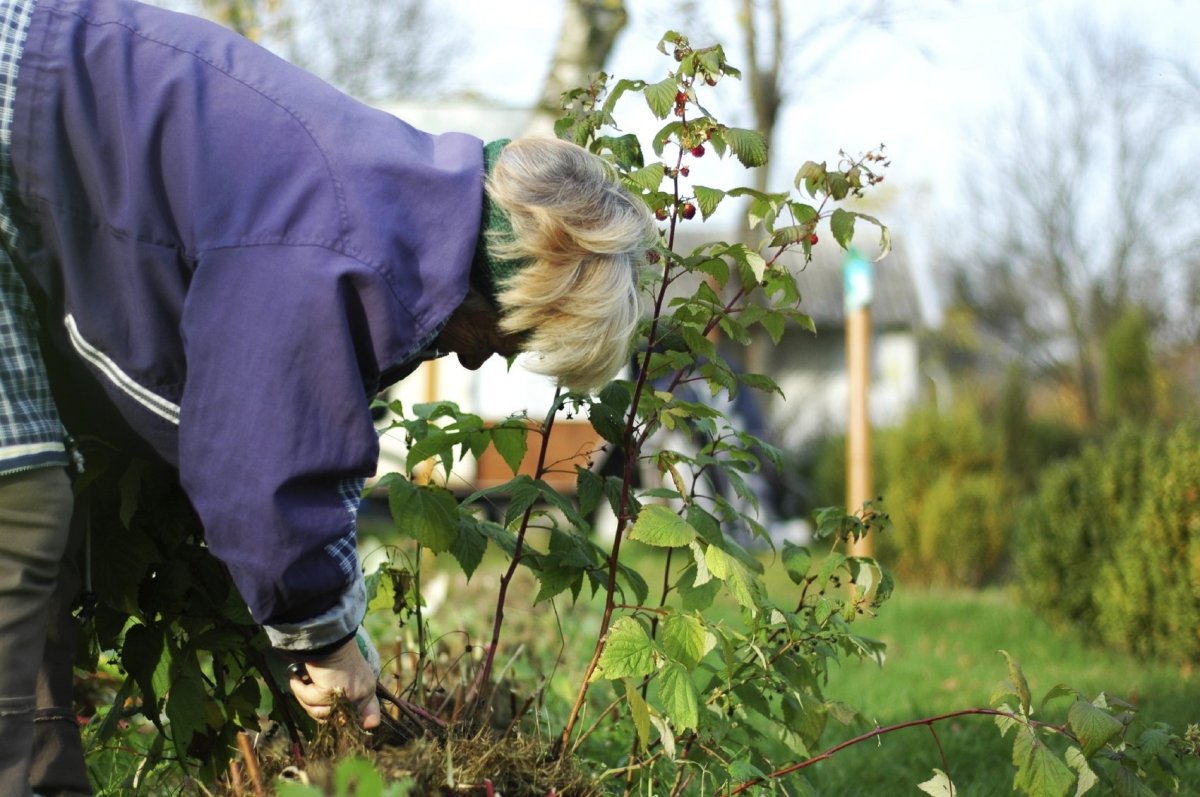 Care for maintenance raspberries in autumn: pruning and top dressing
Care for maintenance raspberries in autumn: pruning and top dressing